Auschwitz inmate's notes from hell finally revealed
- Published
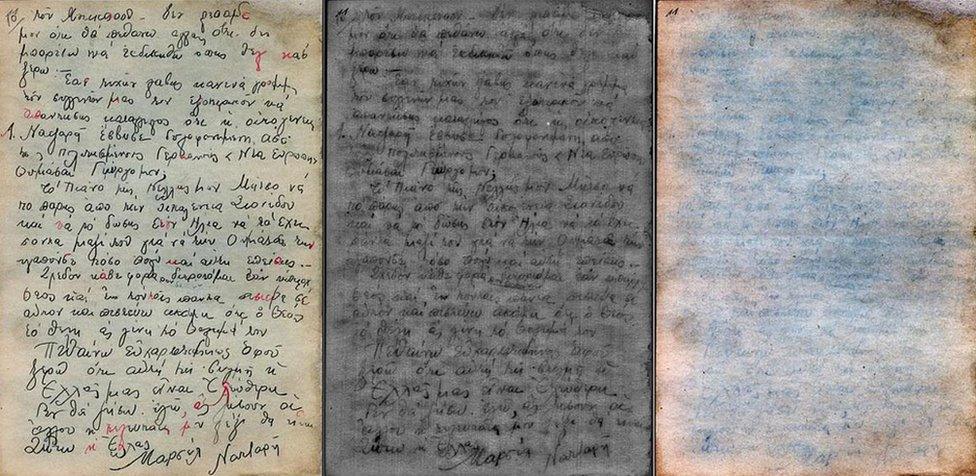
A page of Nadjari's faded notes after processing - the original is on the right
Chilling testimony from an Auschwitz inmate forced to help the Nazi murder squads has finally been deciphered, thanks to painstaking detective work and digital imaging.
On scraps of notepaper Marcel Nadjari, a Greek Jew, described how thousands of Jews were herded into the gas chambers daily. He saw them "packed in like sardines".
In 1944, the 26-year-old was burning with a desire for revenge. He had heard from fellow Greek Jews that his mother, father and sister Nelli had died at Auschwitz-Birkenau camp, in Nazi-occupied southern Poland, the year before.
"Often I thought of going in with the others, to put an end to this. But always revenge prevented me doing so. I wanted and want to live, to avenge the death of Dad, Mum and my dear little sister," he wrote.
He was among about 2,200 members of the Sonderkommando - Jewish slaves of the SS who had to escort fellow Jews to the gas chambers. Then they had to burn the bodies, collect gold fillings and women's hair, and throw the ashes into a nearby river.

Zyklon B cyanide pellets were used in the Auschwitz gas chambers
Industrial murder
Having witnessed Nazi Germany's killing machine close up they knew it was only a matter of time before the SS exterminated them too.
So in November 1944 Nadjari stuffed his 13-page manuscript into a thermos flask, which he sealed with a plastic top. He then placed the thermos in a leather pouch and buried it near Crematorium III.
"The crematorium is a big building with a wide chimney and 15 ovens. Under a garden there are two enormous cellars. One is where people undress and the other is the death chamber. People enter it naked and once about 3,000 are inside it is locked and they are gassed. After six or seven minutes of suffering they die," he wrote.
He described how the Germans had installed pipes to make the gas chamber look like a shower room.
"The gas canisters were always delivered in a German Red Cross vehicle with two SS men. They then dropped the gas through openings - and half an hour later our work began. We dragged the bodies of those innocent women and children to the lift, which took them to the ovens."
The ashes from each adult victim weighed about 640 grams (1.4 pounds), he notes.
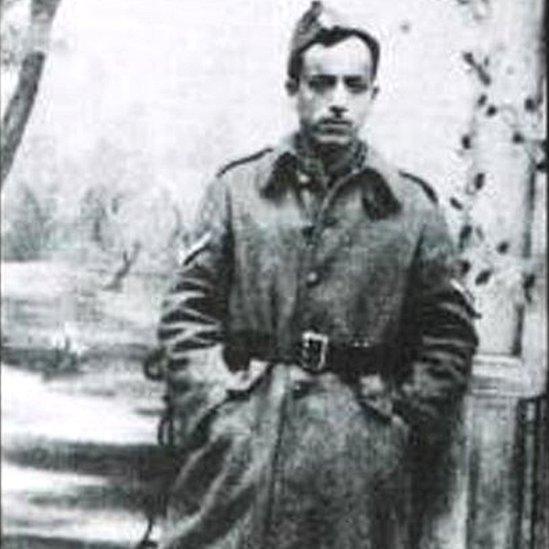
Marcel Nadjari in Greek army uniform before he was sent to Auschwitz


Life after death
It is clear from his notes that he expected to die in the camp - but this was his message to the outside world. A message that would have meant death for him had the SS found out.
Thirty-six years later a Polish forestry student by chance unearthed the thermos, at a depth of about 40cm (16 inches), during digging at the site.
Miraculously Nadjari survived Auschwitz and deportation to Mauthausen concentration camp in Austria as the Third Reich collapsed.
After the war he got married and in 1951 moved to New York. He already had a one-year-old son, and in 1957 his wife Rosa gave birth to a girl, whom they named Nelli - after Marcel's beloved dead sister.
In pre-war Thessaloniki he had worked as a merchant. In New York he made a living as a tailor.
Nadjari died in 1971, aged 53 - nine years before his Auschwitz message was discovered.
The wet soil had taken its toll: just 10% of the message was legible by the time Russian historian Pavel Polian decided to rescue it, using modern technology.
Such rare, direct evidence is "central" for documenting the Holocaust, Mr Polian said.
Auschwitz: Drone footage from Nazi concentration camp
High-tech success
Last month the Institute of Contemporary History in Munich published Mr Polian's findings (in German), external. He is working on a new edition of Scrolls from the Ashes, a Russian book about the Sonderkommando evidence, including Nadjari's text.
Four other Sonderkommando members had left written records, the most important being that of Salmen Gradowski, a Polish Jew. They had written mostly in Yiddish. Having been found earlier, they were in better condition.
Mr Polian received a scan of Nadjari's manuscript from the Auschwitz Museum archive. After talking about its poor condition on Russian radio he was contacted by a young Russian IT expert, Alexander Nikityaev, who offered to help.
Mr Nikityaev spent a year experimenting with Adobe Photoshop's digital imaging software to restore the faded text.
He used red, green and blue filters - red being the most effective - to achieve 90% legibility. That was done with commercial software, but multispectral analysis - technology used by police and secret services - is even more effective.
Mr Polian got the text translated from Greek into English by Ioannis Carras, a Greek-British scholar living in Freiburg, Germany.
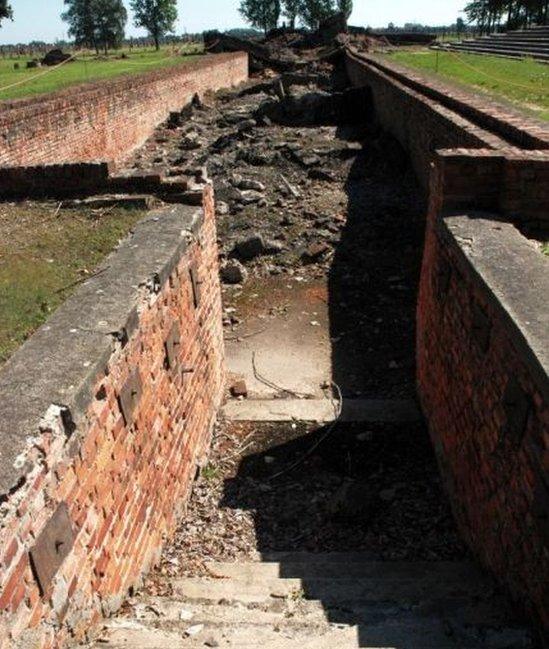
Ruins of gas chamber and crematorium III: Entrance to the changing room
Counting the trains
Speaking to the BBC, Mr Polian said he was struck by Nadjari's accurate estimate of the number of victims at Auschwitz: 1.4 million.
Historians say the Nazis killed more than 1.1m Jews at the vast camp complex, and 300,000 others, most of them Poles and Soviet prisoners-of-war.
"The inmates obviously discussed how many trains had arrived," Mr Polian said.
"Nadjari's desire for revenge stands out - that's different from the other accounts. And he pays much attention to his family. For example, he specifies who he wants to receive his dead sister's piano."
Nadjari included an introduction, in German, Polish and French, asking whoever found the manuscript to pass it on to the Greek embassy, for forwarding to his friend Dimitrios Stefanides.
Nadjari witnessed a desperate revolt by Sonderkommando members, led by captured Soviet soldiers, who tried to blow up at least some of the five crematoria, using stolen gunpowder.
The Nazis crushed them - and Nadjari was not among the mutineers, so he survived.
About 110 Sonderkommando members survived Auschwitz-Birkenau, most of them Polish Jews. In most cases they were desperate to forget these horrors - few wrote about their ordeal.
- Published5 May 2016
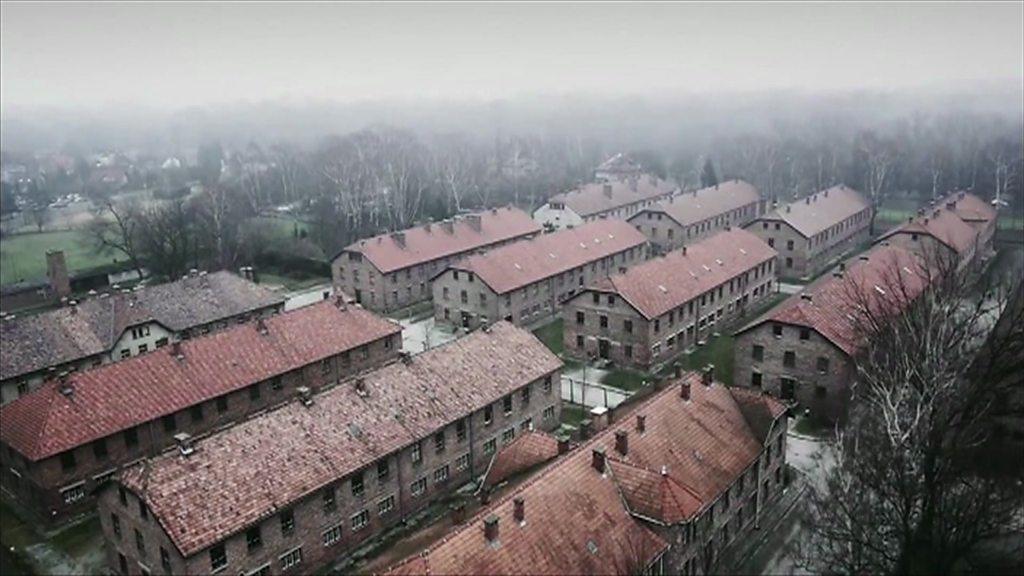
- Published15 September 2017
- Published24 April 2017
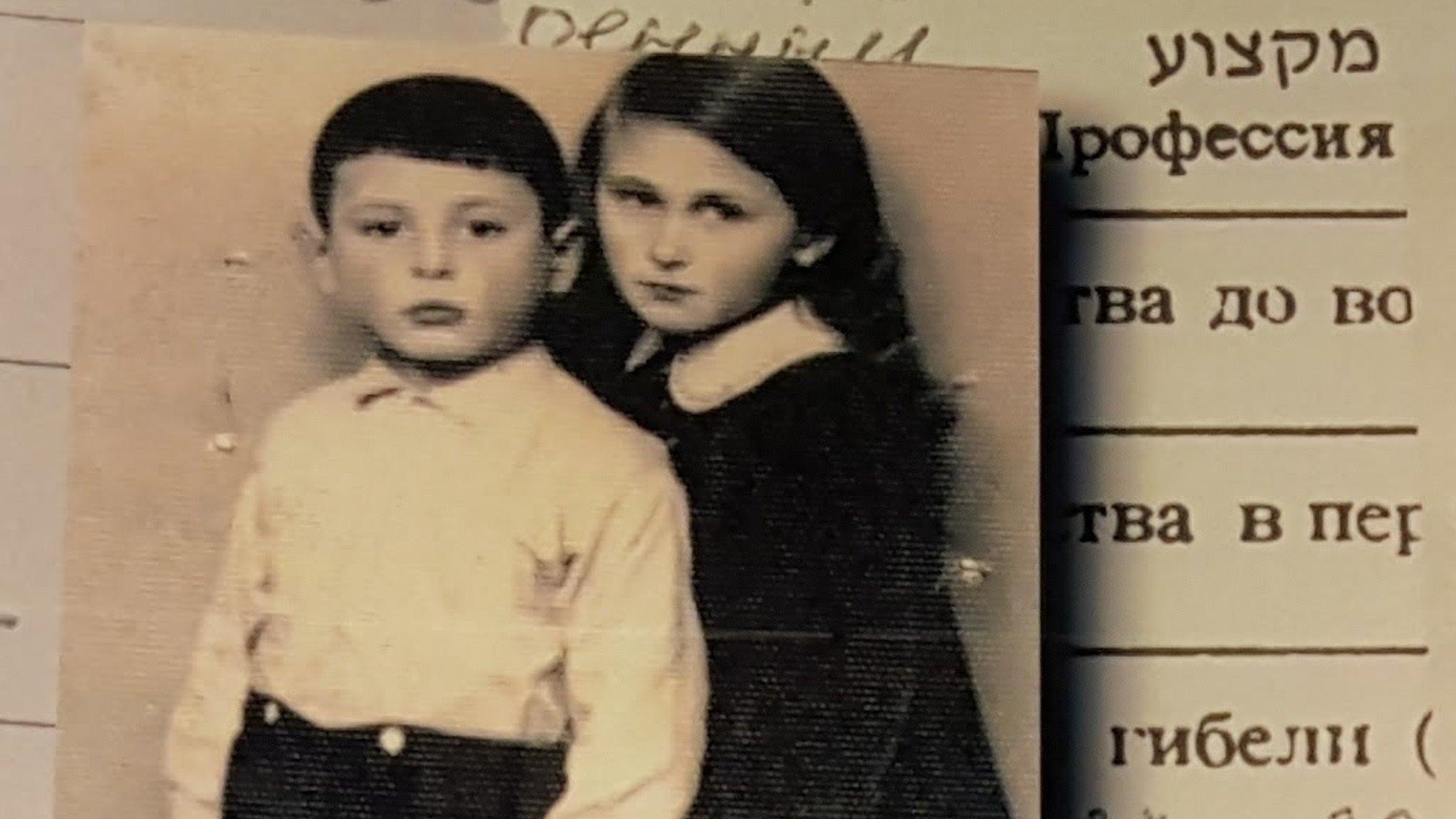
- Published23 January 2012
